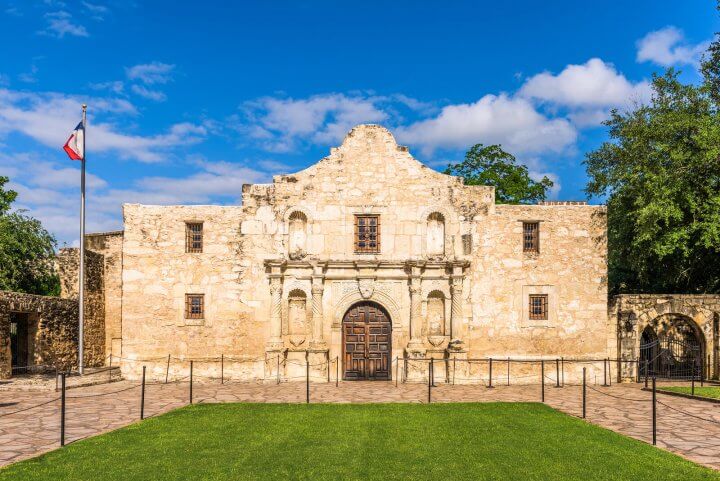The Alamo played a major role in the history of Texas and in the Texas revolution. So, let’s take a look at the history of the Alamo.
First, let’s look at the name: The Alamo was originally named Misión San Antonio de Valero. So, why did the name change? Well, the name changed when the role changed. Originally, it served as home to missionaries and their Indian converts, and played this role for nearly seventy years. In fact, it was built in 1724.
However, in 1793, Spanish officials secularized San Antonio’s five missions and distributed their lands to the remaining Indian residents. These residents stayed there and continued to farm the land. They once just stayed in the mission, and now were land owners and productive members of the growing community of San Antonio.
In the early 1800s, the Spanish military stationed a cavalry unit at the former mission. It was then that the mission’s name changed to what it is known as today. The soldiers referred to the old mission as the Alamo (the Spanish word for “cottonwood”) in honor of their hometown Alamo de Parras, Coahuila.
So why is the Alamo significant? Well for one, the post’s commander established the first recorded hospital in Texas in the Long Barrack, which holds historical significance.
Secondly, the Alamo was home to both Revolutionaries and Royalists during Mexico’s ten-year struggle for independence. And then, the military — Spanish, Rebel, and then Mexican — continued to occupy the Alamo until the Texas Revolution. So, it housed many of the fighters in significant Texas history.
But most importantly, the Alamo is known for its role in the Texas Revolution. Both San Antonio and the Alamo played a critical role in the Texas Revolution.
What events took place here?
First, in December 1835, Ben Milam led Texian and Tejano volunteers against Mexican troops that were quartered in the city. It took five days of fighting house to house before they finally forced the Mexican general, General MarÃn Perfecto de Cós and his soldiers to surrender. Then, the victorious volunteers that had fought the Mexican military took occupancy of the Alamo, which was fortified prior to the battle. They did however do some work to strengthen its defenses.
On February 23, 1836, these volunteers were put to the test with the arrival of General Antonio López de Santa Anna’s army outside San Antonio. However, they were undaunted, the Texians and Tejanos prepared to defend the Alamo together.
This group of volunteer defenders held out for thirteen days against Santa Anna’s army.
William B. Travis, the commander of the Alamo, sent couriers carrying pleas for help to communities in Texas. And, on their eighth day of the siege, a band of thirty-two volunteers from Gonzales arrived, bringing the number of defenders to nearly two hundred.
Much of the history of the events that occurred in the Alamo is speculation, but legend holds that with the possibility of additional help fading, Colonel Travis drew a line on the ground and asked any man willing to stay and fight to step over — all except one did.
The defenders saw the Alamo as the key to the defense of Texas, and they were ready to give their lives rather than surrender their position.
The final assault came the morning of March 6, 1836. Columns of Mexican soldiers headed for the Alamo’s walls. Cannon and small arms fire from inside the Alamo beat back several attacks, however, they were able to regroup and scaled the walls and rushed the inside of the compound. Eventually the defenders were overwhelmed and the battle ended with Santa Anna victorious.
So, why is this battle so important? Not because of the facts, as many of those are debated, but because of what it symbolized. People worldwide continue to remember the Alamo as a heroic struggle against impossible odds. It was a place where men made the ultimate sacrifice for freedom. The Alamo, for this reason is a Shrine of Texas Liberty.


Leave a Reply